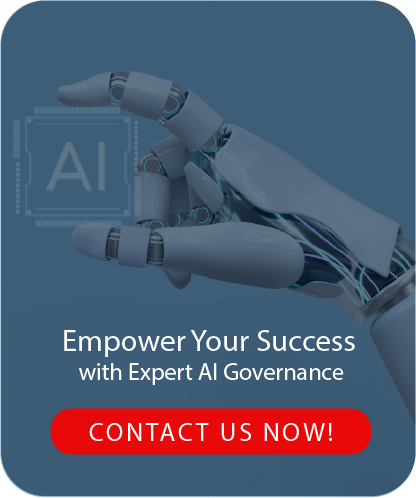Artificial intelligence is reshaping the way organizations operate, offering unprecedented opportunities to optimize processes and drive innovation. However, realizing its full potential requires a robust AI framework—one that is strategically designed and ethically aligned. From building skilled teams to ensuring seamless integration, this article explores the essential components of crafting an effective AI framework for success. Whether you're navigating the complexities of implementation or striving to maintain ethical standards, this guide provides actionable insights to help your business thrive in the AI-driven future.

Building a Skilled AI Team
Establishing a skilled AI team involves carefully defining roles that align with the unique demands of an AI framework. Each team member should possess a strong foundation in their respective fields, be it data science, machine learning, or software engineering. Encouraging collaboration among these diverse roles leads to innovative problem-solving and enhances the overall effectiveness of AI initiatives. Additionally, fostering an environment of continuous learning is essential, as the AI landscape evolves rapidly.
At Vinali Advisory, we bring innovation and expertise in AI governance to deliver tailored advisory solutions. Meet the experts shaping the future.
Recruitment strategies must emphasize both technical skills and cultural fit. A well-rounded team capable of navigating the complexities of an AI framework thrives on diversity of thought and experience. Establishing clear communication channels allows for the free exchange of ideas, which can lead to more effective strategies and improved outcomes. Investing in ongoing training and mentorship further solidifies the team’s capabilities, ensuring that they are not just skilled, but also adaptable to the changing demands of technology and business landscapes.
Roles and Responsibilities in an AI-Driven Organization
In an AI-driven organization, team dynamics hinge on well-defined roles. Data scientists are tasked with developing models and algorithms that can process vast amounts of data. Their analysis helps guide decision-making and strategy. Meanwhile, AI engineers focus on implementing these models into production systems, ensuring they integrate seamlessly with existing technologies. Collaboration among these professionals is essential as they work towards optimizing the performance of AI systems.
Equally important are the responsibilities of project managers and ethicists in this environment. Project managers oversee timelines and coordinate between teams to ensure that projects run smoothly and meet organizational goals. On the other hand, ethicists address potential biases in AI systems, promoting ethical practices in data usage. By encompassing technical expertise alongside ethical considerations, an organization can harness the full potential of AI while remaining aligned with its core values.
Implementing AI Solutions
Navigating the complexities of AI implementation requires a clear strategy and a thorough understanding of organizational needs. The initial step involves assessing current processes and identifying the areas where AI can provide the most impactful solutions. A comprehensive analysis allows teams to define specific objectives and set the groundwork for successful integration. Engaging stakeholders from various departments during this phase fosters collaborative efforts, ensuring that the solutions developed are well-aligned with the organization's goals and capabilities.
Another critical aspect of effectively implementing AI solutions lies in selecting the right technology and tools that match the identified needs. Integration should be conducted gradually, focusing on pilot programs to test the waters and refine functionalities. Training staff to work alongside new AI tools is essential for maximizing productivity and driving adoption. Consistent monitoring during the transition period helps identify potential roadblocks, allowing for timely adjustments that support a smooth integration experience.

Best Practices for a Smooth AI Integration
A successful integration of AI framework solutions begins with thorough planning and a clear understanding of organizational needs. Assessing existing workflows and pinpointing areas where AI can enhance efficiency is crucial. Engaging stakeholders from various departments fosters collaboration and ensures that the integration process aligns with overarching business objectives. Regular communication helps to address concerns and keeps teams informed about the upcoming changes, reducing resistance and encouraging buy-in.
Training is another key aspect that often determines the success of AI framework implementations. Providing comprehensive training sessions empowers employees to utilize new systems effectively and minimizes disruption. It is important to create an environment where team members feel comfortable seeking assistance or voicing their challenges as they adapt to AI tools. Establishing a feedback loop can capture insights from users, allowing for iterative improvements and ensuring that the solution evolves in tandem with the organization’s needs.
| Best Practice | Description | Benefits |
|---|---|---|
| Thorough Planning | Carefully assess organizational needs and workflows before implementing AI. | Ensures alignment with business objectives and maximizes efficiency. |
| Stakeholder Engagement | Involve team members from various departments in the integration process. | Fosters collaboration and reduces resistance to change. |
| Comprehensive Training | Provide training sessions to familiarize employees with AI tools. | Empowers employees and minimizes disruption during integration. |
| Regular Communication | Maintain open lines of communication throughout the integration process. | Addresses concerns and keeps teams informed about changes. |
| Feedback Loop | Establish a system for users to provide insights and feedback. | Facilitates continuous improvement of AI solutions. |
Measuring AI Performance
Evaluating AI Framework success relies heavily on specific key metrics that provide insights into its performance. These metrics include accuracy, precision, recall, and F1 score, which collectively help businesses assess how well the AI models are functioning in real-world applications. Additionally, metrics such as processing time and user satisfaction are essential to understanding the overall efficiency and impact of AI systems. Each of these indicators contributes to a comprehensive picture of how effectively an AI solution meets organizational objectives.
The process of measuring AI performance should be continuous, as it ensures ongoing optimization and refinement of algorithms. To achieve this, organizations can implement regular assessment cycles that incorporate feedback from end-users and relevant stakeholders. This feedback loop enables teams to identify areas for improvement, leading to enhanced accuracy and user experience over time. Monitoring these performance metrics also supports alignment with the company's broader mission and strategic goals, reinforcing the value of AI initiatives.

Key Metrics to Evaluate AI Success
Evaluating the success of AI initiatives requires focused metrics that reveal both the technology’s effectiveness and its alignment with organizational goals. Key performance indicators (KPIs) such as accuracy, precision, recall, and F1 score offer insight into how well AI models are performing. Additionally, monitoring the adoption rate within teams reflects user engagement and acceptance, indicating how effectively the technology integrates into workflows. These metrics, when analyzed collectively, provide a comprehensive picture of AI performance.
Another important aspect involves assessing the impact of AI solutions on business outcomes. Metrics like time savings, process efficiency improvements, and customer satisfaction levels help gauge the real-world benefits of AI implementations. Companies should also consider qualitative feedback from users to understand the perceived value of AI tools within their operations. A well-rounded approach to measuring performance not only highlights areas for improvement but also reinforces the strategic role of AI in achieving business objectives.
Ensuring Ethical Considerations in AI
Artificial intelligence (AI) has the potential to transform industries and improve decision-making processes. However, developers and organizations must prioritize ethical considerations to prevent biases and ensure fairness. Establishing clear ethical guidelines is essential for the responsible deployment of AI technologies. By incorporating diverse perspectives in the development process, teams can minimize risks and create systems that are sensitive to varied societal norms and values.
Transparency also plays a critical role in fostering trust within the community. Clear communication about how AI systems work and the data used is necessary to adequately inform users and stakeholders. Implementing regular audits and accountability measures can help ensure that AI solutions remain aligned with ethical standards. Organizations should cultivate a culture of responsibility, where employees are encouraged to report concerns and participate in ethical discussions regarding AI initiatives.






